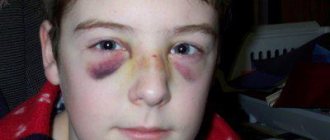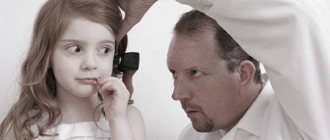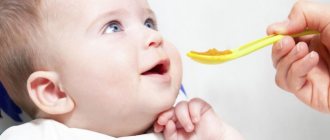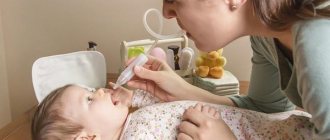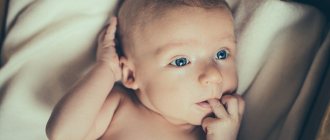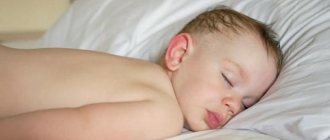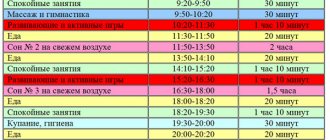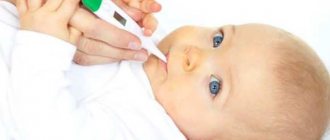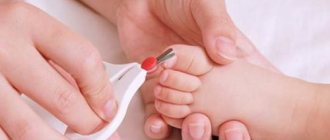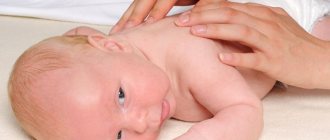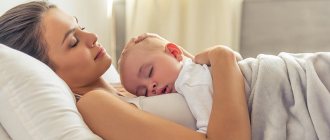According to the Ministry of Health, in Russia there is one hearing-impaired child per 1,000 newborns. More than 1.3 million children were diagnosed with hearing loss in 2021, and this number is growing.
Sustained hearing loss leads to critical impairments in psycho-speech development, up to complete absence of speech with intellectual impairment. They have a bad effect on the psycho-emotional development of the child if the problem is not diagnosed and corrected in a timely manner. Violations identified and corrected before 6 months of age provide an excellent chance that the feature will have virtually no effect on the child’s development. But it is in infancy that the problem is most difficult to notice.
How to tell if your child has hearing loss
In Russia, since 2008, doctors have tested the hearing of all children in the maternity hospital on the 2nd–3rd day of life. This is an audiological screening, which, according to the letter of the Ministry of Health and Social Development No. 2383-РХ dated April 1, 2008, is carried out by recording evoked otoacoustic emissions (OAE). If problems are identified during the check, the doctor prescribes additional examinations for the child.
OAE registration is performed using a special device within a few minutes. The procedure is painless and safe.
Positive screening result
Thanks to audiological screening, the likelihood of “missing” congenital hearing impairments and deafness is reduced. However, screening is not a final diagnosis, but only one of the tests. If for some reason the baby did not pass the UAE in the maternity hospital, this is a reason to schedule an extended study. Most often, this is an objective diagnosis of KSVP (we will talk about this below).
But in any case, parents should notice warning signs that may indicate hearing problems in the baby, and consult a doctor. This primarily applies to children with risk factors for hearing loss:
- Premature and post-term babies.
- Low birth weight.
- Intracranial birth injuries.
- Asphyxia, hypoxic lesions of the central nervous system.
- Severe toxicosis in the mother during pregnancy.
- Administration of ototoxic (negatively affecting the condition of the hearing aid) medications to a newborn or infant.
- Hereditary factor (hearing loss in blood relatives).
Hearing problems in a child can be noticed already in the first days of life. Normally, newborns (children up to 28 days old) react to sound: they turn their heads towards the voice, wake up due to loud sounds, flinch in response to clapping their hands or other sharp sounds. If there is no reaction, you need to talk to your doctor.
At 2–3 months of age, babies recognize and respond to their parents' voice. They also listen to other sounds: rattles, musical toys, dog barking, and so on.
The baby listens to the babble of another child, which he hears from the speaker of the phone. Source: YouTube
At the age of 3-4 months, hearing problems can be indicated by the absence of humming, and at the age of 5-6 months - by the absence of babbling. Here the influence of hearing loss on psycho-emotional and speech development is already evident: it is delayed.
Booming and babbling are sounds that babies make. The first one is like “ah-ah”, “oo-ah”, “ah-uh”. The second one is similar to “ba-ba-ta”, “ta-ta-ta”, “da-ba-ba”.
By the end of the first year of life, the child understands simple words, for example, “mom”, “dad”, “yum-yum”, “drink”, “yes”, “no”. If not, parents should consider getting their child's hearing tested.
Audiological screening of newborns
Long-term observations in our country and abroad indicate that audiological screening should be carried out in newborn children in maternity hospitals. Moreover, the optimal method in this case is to register evoked otoacoustic emissions. This method allows you to detect even slight hearing loss, regardless of whether it is conductive or sensorineural hearing loss. Audiological testing of newborns in maternity hospitals using the UAE registration method is recommended to be carried out no earlier than the 4th day of life, since in some children it is not registered in an earlier period.
A special situation is presented by audiological screening in hospitals for newborns, where premature babies and children with various somatic diseases are kept for a long time. Registration of auditory evoked potentials is also necessary here. The fact is that these children not only have a significantly higher incidence of hearing impairment, but they are also more likely to develop auditory neuropathy. If only otoacoustic emissions are used, then such children are mistakenly diagnosed as having normal hearing. In neonatal pathology departments, it is advisable to conduct audiological testing before the child is discharged from the hospital. If there is a negative result, audiological screening should be repeated (4-6 weeks after the initial screening). A negative result of the initial screening is the absence of otoacoustic emissions or the absence of auditory evoked potentials at the threshold level of stimuli (35-40 dB for different devices) for one or both ears. If the result is negative again, the child is sent for a diagnostic hearing examination to a children's audiological center (regional, regional or republican). Moreover, a diagnostic examination should be carried out in the first 3 months of life. Repeated hearing examination should also be recommended for newborns who successfully passed screening in the maternity hospital, but were then hospitalized in the neonatal pathology department due to hyperbilirubinemia. The introduction of audiological screening of newborns in our country should allow us to get closer to modern standards in the field of care for children with hearing impairments:
- Detection of hearing impairment immediately after birth.
- Diagnosis of hearing impairment (determining the type of hearing impairment, the level of damage to the auditory system and the degree of hearing loss) up to the age of 3-4 months.
- Hearing prosthetics in the presence of hearing thresholds in the speech range of more than 40 dB at the age of 2 months.
- Carrying out the necessary therapeutic measures.
- Early habilitation - classes of the child and parents with a teacher of the deaf on the development of residual hearing, communication skills, speech, mental functions, motor skills - from the moment of detection of auditory perception disorders.
- Cochlear implantation is electrode hearing prosthetics for children with deafness and grade 4 hearing loss in the absence of effectiveness from adequate hearing aid prosthetics (starting from the age of 1 year).
Studies of children with hearing impairment have shown that if children with 3-4 degrees of hearing loss are treated with hearing aids at the age of up to 6 months, then their speech and language development, including the accumulation of passive and active vocabulary, mastery of the grammatical system of their native language, will be the same as in normal-hearing children. If children wear hearing aids after 6 months, then even with the most effective correctional work, the child will still lag behind in speech development. Thus, the introduction of audiological screening of newborns using otoacoustic emissions in Russia is certainly an important stage. But this is only the first stage in the early habilitation of children with hearing impairments. How many cities have centers equipped with modern diagnostic equipment and personnel who can competently carry out differential diagnosis of hearing impairment in children under 6 months of age? Our experience shows that there are still very few such centers. There are even fewer specialists who know how to provide prosthetics for children of this age. There is a catastrophic shortage of teachers of the deaf who have skills in rehabilitation work with young children. And most importantly, many experts still believe that hearing aids for children can be delayed until 1-2 years of age, and classes with a child can only begin at 3 years old in a special kindergarten for children with hearing impairment. But the most intensive development of the auditory pathways and centers, as well as the brain, occurs in the first 1.5 years of a child’s life! And today we know the methods of hearing aids and the development of hearing and speech in deaf children, starting from the first months of life. Therefore, in our opinion, the audiological screening program will “work” if not only maternity hospitals are equipped with modern high-quality equipment, but also specialists update their ideas and knowledge about the possibilities of early rehabilitation. It depends on us, specialists, whether a deaf child will have a chance to learn to hear and speak like normal hearing children.
| I.V.Koroleva, professor of the Russian State Pedagogical University named after. A.I. Herzen (Department of Deaf Pedagogy), St. Petersburg Research Institute of Ear, Throat, Nose and Speech, St. Petersburg Medical Academy of Postgraduate Education (Department of High Technologies in Otorhinolaryngology and Speech Pathology) |
What to do if you suspect hearing loss in a child
An audiologist deals with hearing problems. But in Russian realities, parents should start with a visit to the pediatrician. Tell your doctor if you have any suspicions and ask for a referral to an audiologist. With a referral from a pediatrician, you will not have to pay for a consultation with a specialist if the child has a compulsory medical insurance policy.
Please note that you need to consult an audiologist, not an otolaryngologist (ENT). An audiologist is an additionally trained otolaryngologist. He knows everything about diagnosis and treatment of hearing, unlike the usual “ear, nose and throat”. Traditional methods of ENT treatment for hearing loss are not effective.
About the benefits of audio screening
Diagnosis of hearing loss in children at an early age is mandatory and useful. In the first years of life, a child learns to understand speech and perceive different sounds. If he has hearing problems, this will negatively affect the development of intellectual and speech skills.
Thanks to the fact that modern medicine has gained the ability to detect hearing defects at an early stage, today children are provided with timely help. It has already been proven that children with 3-4 degrees of hearing loss who have undergone hearing aids before the age of six months are actively developing and are no different from their peers without hearing loss.
Diagnosis of hearing impairment and timely hearing aids allow the child to:
- actively develop in the future;
- master active and passive vocabulary;
- perceive speech and acquire the necessary skills.
If hearing correction was performed later than 6 months, the child may be delayed in speech development. Therefore, audio screening should be performed in a timely manner to correct hearing loss in children.
What will the doctor do?
First, the audiologist will check to see if the child actually has a hearing loss. If the diagnosis confirms hearing loss, the doctor will prescribe treatment. It is important to know that sensorineural hearing loss cannot be cured; it can only be corrected with the help of hearing aids (HA). In case of severe losses, CA may be ineffective, then cochlear implantation will be recommended for the child.
How do audiologists diagnose hearing loss?
The doctor will first talk to you and then examine the child. The specialist will check the child’s hearing condition using objective diagnostic methods.
There are also subjective methods - these are tonal or game audiometry. A basic method that is great for adults. But there are nuances: patient participation. When the patient is under 3 years old, he cannot consciously follow the doctor’s orders, which means that the result of such a test will be unreliable.
If the child is over 3 years old, his hearing can be tested using pure-tone audiometry
Game audiometry is a hearing diagnostics in which a teacher of the deaf is involved. He helps the doctor and, using gaming techniques, determines how the baby reacts to sounds of a certain tone.
Game audiometry is carried out with the participation of a teacher of the deaf.
Therefore, in the case of young children, the “gold standard” is objective audiometry, that is, OAE, KSVP, ASVP, ASSR tests and others. At the same time, in comparison with the traditional registration of short-latency auditory evoked potentials (SLEP), the registration of acoustic brainstem evoked potentials (ASEP) differs in its automatic algorithm, when a specialist is not involved in data analysis.
At the appointment, audiologists usually begin by examining the external auditory canal and eardrum using an otoscope. This device literally allows you to look into your ear. Otoscopy is a painless and safe procedure, but a small child may be afraid of a stranger and actively protest.
Otoscopy allows you to visually assess the condition of the ear canal and eardrum
The physician then measures the evoked otoacoustic emissions. Measuring OAE allows you to assess the condition of the inner ear and diagnose sensorineural hearing loss.
Sensorineural hearing loss occurs due to disturbances in the perception of sound as a result of damage to the structures of the inner ear or auditory analyzers of the brain.
OAE measurement is a quick and painless procedure
Another hardware diagnostic method is acoustic impedance measurement. The essence of the method: using the device, the doctor measures the acoustic conductivity of the middle ear. There are two types of impedance measurements: tympanometry and acoustic reflexometry.
This is also a safe and painless diagnostic procedure. Allows you to identify dysfunctions of the middle ear, pathology of the facial nerve and auditory analyzers.
The most reliable method for diagnosing hearing in newborns and infants is recording short-latency auditory evoked potentials (SLEPs). Using special equipment, the doctor records brain stem impulses that occur in response to sounds. The child must sleep during the procedure. To record the CVEP, the doctor places the device’s sensors on the baby’s scalp after treating the skin with a special scrub. This is perhaps the only moment in preparation that a small patient may not like.
Outwardly, this resembles recording a cardiogram.
Registration of CVEP is carried out during the patient’s sleep
The procedure is painless and harmless. Registration of CVEP allows diagnosing hearing impairment, hearing threshold, and is also necessary for selecting a patient for cochlear implantation.
Registration of KSVP can be carried out at any age
What is Otoacoustic Emission (OAE)
Otoacoustic emissions are a screening test performed by an audiologist to determine the presence of sensorineural or conductive hearing loss. The human hearing organ consists of three parts: the outer, middle and inner ear. There are hair cells in the human inner ear. When sound from outside enters the ear, the stereocilia (microvilli) of the hair cells vibrate in response to the incoming sound signals, and these vibrations are transmitted in the form of very soft sounds from the inner ear through the middle ear to the outer ear. The OAE test measures the level of these vibrations, which are generated in the cochlea and inner ear in response to a sound stimulus.
How to treat hearing loss in children
The doctor prescribes treatment depending on the diagnostic results: the identified pathology and the individual characteristics of the child.
Remember, the earlier a problem is identified, the easier it is to eliminate its impact on the child’s development. Ideally, hearing impairment should be detected in the first months of life. In this case, proper treatment prevents the negative impact of hearing loss on the baby’s development.
Hearing pathologies are divided into two groups: conductive and sensorineural (sensorineural) hearing loss.
With conductive hearing loss, the transmission of sound along the auditory pathway is impaired. This could be damage to the eardrum as a result of otitis media, tumors, foreign bodies, the formation of cerumen plugs, atresia (infestation) of the ear canal, and so on.
Treatment options for conductive hearing loss depend on your specific situation. This may include surgical restoration of the ear canal, removal of foreign bodies and wax plugs, treatment of infectious diseases and their consequences.
To prevent conductive hearing impairment as a result of infectious diseases, it is important to vaccinate your child in accordance with the national vaccination schedule.
With sensorineural hearing loss, the perception of sounds is impaired due to damage to the inner ear, vestibulocochlear nerve or auditory analyzer (parts of the brainstem and cortex). Sensorineural hearing loss is caused by genetic factors, infectious diseases, the use of ototoxic drugs, injuries, and tumors.
The treatment method depends on the cause of sensorineural hearing loss and its severity. In severe cases bordering on deafness and when hearing aids are ineffective, doctors use cochlear implants. These are devices that perform the functions of damaged or missing hair cells in the inner ear.
A cochlear implant consists of an external microphone and a transmitter that converts sound into electrical impulses. The internal part consists of a receiver, which decodes electrical impulses, and electrodes, which transmit the decoded signals to the cochlea.
The implant allows a child with sensorineural hearing loss to hear
A cochlear implant is placed during surgery. The child is put into medicated sleep, he does not feel pain. The operation is considered safe, and serious complications, such as damage to the facial nerve, are extremely rare.
First hearing test for a newborn - in the maternity hospital
The formation of the fetal hearing organ begins from the fifth week of intrauterine life and continues throughout the entire period of pregnancy.
Fun fact: By the 20th week of pregnancy, the fetal inner ear has matured to the size of an adult inner ear.
Audiological screening is carried out for all newborns in maternity hospitals using the OAE (otoacoustic emission) method, which can detect even slight hearing loss. If for some reason screening was not carried out in the maternity hospital (this happens, for example, if a newborn was transferred to intensive care immediately after birth), then an audio test is performed on such children at the age of 1 month. Repeatedly at the age of three months.
What is auditory-verbal rehabilitation?
Treatment for hearing loss does not end once the cause is eliminated or a cochlear implant is installed. The child requires auditory-speech rehabilitation, during which he learns to respond to sounds, understand speech and speak.
Several specialists are involved in the rehabilitation of a child after installation of an implant, including an otolaryngologist (surgeon), audiologist, audiologist, teacher of the deaf, psychologist or psychiatrist. Each specialist solves important tasks:
- The otolaryngologist ensures that there are no complications in the postoperative period.
- An audiologist adjusts the cochlear implant processor.
- The audiologist evaluates the effectiveness of implantation.
- Teachers of the deaf teach the child to respond to sounds, understand speech and speak.
- The psychologist creates conditions in which the child adapts to new situations and challenges.
- The psychiatrist, if necessary, corrects defects in the patient’s psycho-emotional development.
After effective auditory-speech rehabilitation, the child can attend a specialized preschool institution and boarding school or a comprehensive school and kindergarten.
